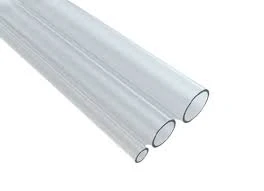ഒക്ട് . 19, 2024 01:47 Back to list
hdpe pipe electrofusion welding
Electrofusion Welding of HDPE Pipes A Comprehensive Overview
Electrofusion welding is a widely used method for joining high-density polyethylene (HDPE) pipes, particularly in applications requiring durability and resistance to various environmental factors. This technique leverages electrical heating to create a strong joint between two sections of HDPE, making it an ideal choice for various industrial and infrastructural uses, including water supply systems, gas distribution networks, and sewage systems.
Electrofusion Welding of HDPE Pipes A Comprehensive Overview
One of the key advantages of electrofusion welding is its ability to create consistent, high-quality joints. The temperature and duration of the heating can be precisely controlled, minimizing the risk of defects common in traditional welding methods. Additionally, the electrofusion process is relatively straightforward, requiring less specialized skill compared to other techniques, making it accessible for many operators who may not have extensive training in plastic welding.
hdpe pipe electrofusion welding

Another significant benefit of using electrofusion welding for HDPE pipes is its effectiveness in challenging environments. The electrofusion process does not rely on external heat sources or methods, which can be affected by wind, rain, or other weather conditions. This allows for reliable installation in both outdoor and indoor settings.
Moreover, the environmental impact of the electrofusion process is minimal. HDPE is a recyclable material, and the electrofusion joints, when made correctly, can last for decades without needing replacement. This longevity contributes to reduced waste and lower costs over the pipe's lifespan, aligning with modern sustainability practices.
However, proper preparation and execution of the electrofusion process are vital to ensuring strong joints. This includes thorough cleaning of the surfaces to be joined, proper alignment of the pipes and fittings, and adherence to the manufacturer's specifications regarding electrical input. Neglecting these steps can result in weak joints that might fail under pressure or environmental stress.
In conclusion, electrofusion welding of HDPE pipes represents a sophisticated and reliable method of pipe joining that offers numerous advantages, from ease of use to superior joint integrity. Its role in modern infrastructure projects is crucial as industries continue to seek methods that promote safety, efficiency, and sustainability. As technology advances, electrofusion welding is likely to evolve further, providing even greater solutions for the challenges faced in pipe installation and maintenance.
-
Durable PP Rigid Sheet: Lightweight, Chemical Resistant Solutions
NewsAug.21,2025
-
PVC Grey Sheet for Extraction: Chemical Resistant & Durable
NewsAug.19,2025
-
Durable PVC Pipe Fittings for Plumbing & Irrigation Needs
NewsAug.18,2025
-
HDPE Steel Belt Reinforced Spiral Corrugated Pipe | High Strength
NewsAug.17,2025
-
HDPE Pipe Fittings: Durable, Leak-Proof Solutions
NewsAug.16,2025
-
Premium CPVC Sheet: High-Temp & Chemical Resistant Solutions
NewsAug.15,2025

